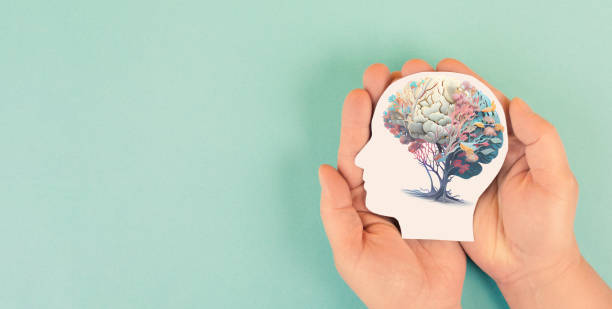In today's rapidly evolving world, the quest for sustainable solutions has become more urgent than ever. One promising approach gaining traction is bioinspired design, which draws inspiration from nature to create innovative and sustainable solutions across various industries. This blog post will delve into the concept of bioinspired design, exploring its principles, applications, and real-world examples.
Biomimicry, often referred to as nature-inspired design or biomimetics, is the practice of drawing inspiration from biological systems and processes to solve human challenges. This approach has ancient roots but has gained renewed interest in recent years due to its potential to address sustainability issues. Examples of biomimetic designs abound, from Velcro, inspired by the burrs of the burdock plant, to bullet trains modeled after the sleek shape of kingfisher beaks.
At the heart of bioinspired design lie several key principles borrowed from nature. Adaptation, the ability of organisms to evolve and thrive in changing environments, serves as a model for designing resilient and flexible solutions. Efficiency, as seen in the resource optimization strategies of biological systems, inspires designs that minimize waste and energy consumption. These principles guide designers in creating solutions that not only mimic nature's forms but also function in harmony with the environment.
The principles of bioinspired design find applications across a wide range of industries, offering sustainable solutions to pressing challenges. In architecture, biomimetic building designs optimize energy efficiency and thermal regulation, drawing inspiration from termite mounds and tree canopies. Transportation systems, such as Japan's Shinkansen bullet trains, take cues from the streamlined shape of kingfisher beaks to reduce noise and energy consumption. In medicine, researchers are exploring bioinspired approaches to drug delivery and tissue engineering, mimicking the self-healing properties of biological systems.
To illustrate the real-world impact of bioinspired design, we'll explore several case studies of successful projects. From the Eastgate Centre in Zimbabwe, which uses passive cooling inspired by termite mounds, to the WaterHive system, which mimics the filtration capabilities of mangrove trees to purify water, these examples demonstrate the potential of bioinspired solutions to address complex sustainability challenges. Each case study will delve into the design process, challenges faced, and the environmental benefits of the project.
Bioinspired design offers a promising pathway to sustainable innovation, harnessing the wisdom of nature to create solutions that are efficient, resilient, and environmentally friendly. By embracing biomimicry, designers and innovators can not only meet the needs of today but also ensure a more sustainable future for generations to come. Let us continue to learn from nature and unlock its secrets to drive positive change in the world.
Exploring Biomimicry: Definition and Origins
Biomimicry, often hailed as nature-inspired innovation, is a fascinating field that draws inspiration from the natural world to solve human challenges. From architecture to medicine, biomimicry has permeated various industries, offering sustainable solutions and fostering a deeper understanding of nature's ingenious designs. In this blog post, we delve into the definition, origins, and significance of biomimicry.
Definition of Biomimicry:
Biomimicry, coined from "bio" (life) and "mimicry" (imitation), refers to the practice of emulating nature's forms, processes, and systems to solve human problems. It involves observing, understanding, and applying biological principles to innovate and design sustainable solutions. Biomimicry seeks not only to mimic nature's designs but also to understand the underlying mechanisms and principles that make them efficient and sustainable.
Origins of Biomimicry:
While biomimicry has gained prominence in recent decades, its roots can be traced back centuries. Ancient civilizations, such as the Greeks and Romans, drew inspiration from nature in their architectural designs and engineering feats. However, it wasn't until the late 20th century that biomimicry emerged as a distinct field of study.
One of the pioneers of modern biomimicry is Janine Benyus, whose 1997 book "Biomimicry: Innovation Inspired by Nature" brought widespread attention to the concept. Benyus highlighted numerous examples of how nature's designs could inspire human innovation, ranging from Velcro, inspired by burdock burrs, to self-cleaning surfaces modeled after lotus leaves.
Significance of Biomimicry:
Biomimicry offers a multitude of benefits, both environmental and technological. By learning from nature's time-tested solutions, biomimicry promotes sustainability, efficiency, and resilience in human-designed systems. Here are some key aspects of its significance:
1. Sustainability: Nature has evolved over millions of years to optimize resource use and minimize waste. By emulating natural processes and materials, biomimicry enables the development of sustainable technologies and practices that reduce environmental impact.
2. Innovation: Nature's designs are often innovative and elegant, solving complex problems with simple yet effective solutions. Biomimicry encourages creativity and interdisciplinary collaboration, leading to novel approaches to design and engineering.
3. Resilience: Natural systems have inherent resilience and adaptability, allowing them to withstand environmental challenges. By mimicking nature's strategies, biomimetic designs can enhance the resilience of human systems to environmental changes and disruptions.
4. Efficiency: Many of nature's designs are remarkably efficient in terms of energy and material use. By incorporating biomimetic principles into technology and design, we can improve the efficiency of various processes, leading to resource savings and cost reduction.
Examples of Biomimicry:
The application of biomimicry spans across diverse fields, including architecture, transportation, energy, and medicine. Some notable examples include:
The Eastgate Centre in Zimbabwe, which was inspired by termite mounds to achieve natural ventilation and temperature regulation without conventional air conditioning systems.
The Shinkansen bullet train in Japan, whose design was influenced by the kingfisher bird's beak, reducing noise and energy consumption.
The development of Velcro, inspired by the hook-like structure of burdock burrs.
Biomimicry represents a symbiotic relationship between human innovation and the natural world, offering a pathway towards sustainable development and technological advancement. By embracing nature as a mentor and source of inspiration, we can unlock endless possibilities for solving complex challenges and creating a more harmonious relationship with our planet. As we continue to explore and harness the potential of biomimicry, we stand to benefit not only as inventors and designers but also as stewards of Earth's rich biodiversity.
The Principles of Bioinspired Design
Bioinspired design, also known as biomimetic design, is a captivating approach that draws inspiration from nature to innovate and solve human challenges. By observing and emulating the ingenious solutions found in the natural world, bioinspired design offers a wealth of possibilities for creating sustainable and efficient technologies. In this blog post, we'll explore the fundamental principles of bioinspired design and how they shape innovation across various disciplines.
1. Embrace Nature as a Mentor:
At the heart of bioinspired design lies a deep reverence for nature's wisdom. By viewing nature as a mentor and teacher, designers and engineers seek to understand the underlying principles and mechanisms behind biological phenomena. Whether it's the resilience of spider silk or the efficiency of a bird's wing, nature offers a treasure trove of inspiration waiting to be tapped.
2. Understand Function over Form:
In bioinspired design, function takes precedence over form. Rather than merely replicating the appearance of natural structures, designers focus on understanding the function and purpose behind them. By dissecting how organisms solve specific challenges, whether it's filtration, propulsion, or insulation, designers can extract principles that can be applied to human-made systems.
3. Emphasize Sustainability and Efficiency:
Nature is the ultimate model of sustainability and efficiency, having evolved over billions of years to optimize resource use and minimize waste. Bioinspired design seeks to emulate these principles by developing technologies and practices that are environmentally friendly and resource-efficient. By harnessing biomimetic principles, designers can create products and processes that minimize environmental impact and promote circularity.
4. Foster Interdisciplinary Collaboration:
Bioinspired design thrives on interdisciplinary collaboration, bringing together experts from diverse fields such as biology, engineering, materials science, and architecture. By combining insights from different disciplines, designers can gain a holistic understanding of biological systems and translate them into innovative solutions. Collaboration fosters creativity, cross-pollination of ideas, and accelerates the development of bioinspired technologies.
5. Iterate and Adapt:
Nature is the ultimate tinkerer, constantly iterating and adapting to changing conditions. In bioinspired design, iteration is key to refining and improving upon initial concepts. Designers embrace a mindset of continuous learning and experimentation, recognizing that the path to innovation is often nonlinear. By embracing failure as an opportunity for learning, designers can refine their designs and achieve greater success in emulating nature's solutions.
6. Respect Ethical Considerations:
As we draw inspiration from nature, it's essential to consider the ethical implications of our designs. Bioinspired technologies should not only be sustainable and efficient but also ethically sound, respecting the welfare of both humans and the environment. Designers must consider the broader social, cultural, and ethical implications of their work, ensuring that bioinspired solutions uphold principles of equity, justice, and respect for all life forms.
Bioinspired design offers a pathway towards sustainable and innovative solutions to complex challenges facing humanity. By embracing nature as a mentor, emphasizing function over form, and fostering interdisciplinary collaboration, designers can unlock the full potential of bioinspired technologies. As we continue to explore and apply the principles of bioinspired design, we stand to create a more harmonious relationship between human innovation and the natural world, paving the way for a more sustainable and resilient future.
The Key Principles of Adaptation, Resilience, and Efficiency
In our quest for sustainability, we often look to nature for guidance, finding inspiration in its remarkable ability to adapt, withstand adversity, and optimize resource use. Three key principles—adaptation, resilience, and efficiency—lie at the heart of sustainable design and innovation. Let's explore how these principles contribute to sustainability and why they are essential for ishaping a more resilient future.
Adaptation:
Adaptation is nature's secret weapon for survival in a constantly changing world. Organisms adapt to new environments, evolving traits and behaviors that enhance their chances of success. In sustainable design, adaptation means embracing flexibility and versatility, allowing systems to adjust to shifting conditions. By designing products, buildings, and infrastructure that can adapt to changing needs and environments, we can reduce waste, increase longevity, and minimize the need for constant replacement.
Resilience:
Resilience is the ability to bounce back from adversity, much like a tree bending but not breaking in the face of strong winds. In sustainability, resilience is about building systems that can withstand shocks and disruptions, whether they're environmental, economic, or social. Resilient designs anticipate potential challenges and incorporate redundancy, diversity, and robustness to ensure continuity and stability. By fostering resilience, we can create communities, ecosystems, and economies that are better equipped to weather storms and thrive in the face of uncertainty.
Efficiency:
Efficiency is about maximizing output while minimizing input, optimizing resource use to achieve the desired outcome with minimal waste. Nature is a master of efficiency, with every organism and ecosystem finely tuned to make the most of available resources. In sustainable design, efficiency means designing products, processes, and systems that use resources—such as energy, materials, and water—wisely and sparingly. By embracing efficiency, we can reduce our ecological footprint, conserve finite resources, and minimize environmental degradation.
How These Principles Contribute to Sustainability:
Adaptation, resilience, and efficiency are not just individual principles; they are interconnected and mutually reinforcing. Systems that are adaptable can better respond to changing conditions, increasing their resilience in the face of uncertainty. Meanwhile, resilient designs are often more efficient, as they minimize waste and optimize resource use to enhance longevity and durability.
Together, these principles form the foundation of sustainability, guiding us towards solutions that are not only environmentally sound but also socially equitable and economically viable. By incorporating adaptation, resilience, and efficiency into our design ethos, we can create a more sustainable world—one where human ingenuity aligns with the wisdom of nature, ensuring a thriving planet for generations to come.
Real-World Examples and Case Studies
Biomimicry, the practice of drawing inspiration from nature to solve human challenges, has found diverse applications across a wide range of fields, from architecture and transportation to energy and medicine. Let's take a closer look at some real-world examples and case studies that showcase the innovative potential of biomimicry in action.
Architecture:
In architecture, biomimicry has inspired designs that optimize energy efficiency, promote natural ventilation, and enhance structural resilience. One notable example is the Eastgate Centre in Zimbabwe, which drew inspiration from termite mounds to achieve passive cooling and ventilation without relying on conventional air conditioning systems. By mimicking the shape and ventilation mechanisms of termite mounds, the building maintains a comfortable interior temperature year-round while significantly reducing energy consumption.
Transportation:
Biomimicry has also revolutionized transportation design, leading to innovations that improve aerodynamics, reduce fuel consumption, and minimize noise pollution. The Shinkansen bullet train in Japan is a prime example of biomimetic design, with its sleek, streamlined profile inspired by the kingfisher bird's beak. By mimicking the shape of the kingfisher's beak, the train reduces air resistance and noise levels, resulting in faster speeds and quieter operation.
Energy:
In the energy sector, biomimicry has inspired breakthroughs in renewable energy generation, energy storage, and efficiency. One notable example is the development of bio-inspired solar panels, which draw inspiration from the structure and function of plant leaves to enhance light absorption and energy conversion. By mimicking the intricate network of veins found in leaves, these solar panels achieve higher efficiency levels and greater durability, paving the way for more sustainable energy solutions.
Medicine:
Biomimicry holds tremendous promise in the field of medicine, where researchers are harnessing nature's designs to develop innovative treatments, medical devices, and drug delivery systems. For instance, researchers have developed biomimetic materials that mimic the properties of human tissue, enabling more accurate drug testing and tissue regeneration. Additionally, the design of medical implants, such as artificial joints and heart valves, has been inspired by the structure and function of natural tissues and organs, leading to improved biocompatibility and performance.
These examples only scratch the surface of the diverse applications of biomimicry across various industries. From architecture and transportation to energy and medicine, biomimicry offers endless possibilities for sustainable innovation and problem-solving. By looking to nature as a mentor and source of inspiration, we can unlock the full potential of biomimicry to create a more harmonious relationship between human technology and the natural world. As we continue to explore and apply biomimetic principles, we stand to benefit not only as inventors and designers but also as stewards of Earth's rich biodiversity.
In conclusion, bioinspired design stands as a beacon of innovation, offering a transformative approach to solving complex challenges while fostering a deeper connection with the natural world. Throughout this exploration, we've seen the profound significance of bioinspired design across various disciplines, from architecture and transportation to energy and medicine.
By embracing nature as a mentor and source of inspiration, bioinspired design enables us to unlock sustainable solutions that are efficient, resilient, and harmonious with the environment. Through principles such as adaptation, resilience, and efficiency, we can create products, processes, and systems that not only meet our needs but also respect the delicate balance of ecosystems and promote the well-being of future generations.
As we look to the future, there is boundless potential for further exploration and implementation of bioinspired design principles. By fostering interdisciplinary collaboration, encouraging creativity, and embracing a mindset of continuous learning and adaptation, we can unleash the full power of biomimicry to address pressing global challenges such as climate change, resource scarcity, and human health.
Let us continue to draw inspiration from the wonders of nature, seeking innovative solutions that honor the wisdom of ecosystems and promote sustainability on a global scale. Together, we can chart a course towards a more resilient, equitable, and harmonious future, where human innovation flourishes in harmony with the natural world. The journey of bioinspired design is ongoing, and the possibilities are endless—let us embark on this journey with curiosity, humility, and a commitment to shaping a better world for all.








